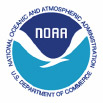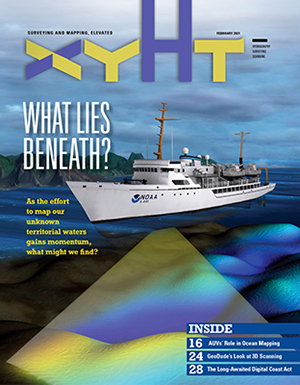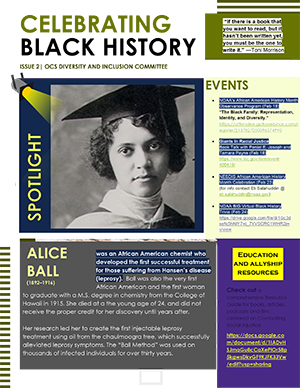
Coast Survey international efforts progress virtually
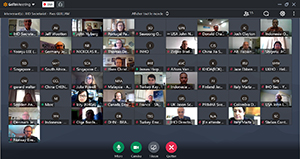
WEND Working Group 2021 virtual group image.
This month, the Office of Coast Survey is continuing to progress its international endeavors, especially its
International Hydrographic Organization (IHO) partnership, through virtual meetings. The
Worldwide Electronic Navigation Database Working Group (WEND), represented by
Julia Powell as head of the U.S. delegation, met virtually on February 17-18, gathering approximately 55 participants across several time zones (Asia, Europe and the Americas). Participants discussed governance, coordination, production, and distribution of new digital data, products and services which include information about water levels, surface currents, high-resolution bathymetry, nautical publications, and electronic navigational charts. These are all supported within the S-100 framework and will be used within navigation systems. Key accomplishments this week included consensus on the core WEND-100 Principles and an agreed upon path to full IHO adoption. The group also established a task team to consider the path forward for the WEND-100 Implementation Guidelines. Deputy National Hydrographer
John Nyberg chaired the meeting and was re-elected to serve a three year term as the group chair. Additionally, Coast Survey participated virtually in the
South West Pacific Hydrographic Commission (SWPHC) meeting on February 17-19 to discuss hydrographic activity in the South West Pacific region, including a gap analysis of goals submitted to deliver a SWPHC Strategic Plan, capacity building, and Seabed 2030, among other topics.
Gregory Seroka of the Coast Survey Development Lab presented to the SWPHC on NOAA’s
Global Extratropical Storm Surge and Tide Operational Forecast System (ESTOFS), which will lead to a follow-up workshop on the tool, its uses, and scope in the region. For more information on WEND contact
Julia.Powell@noaa.gov, and for more information on SWPHC contact
Jonathan.Justi@noaa.gov.
Hydrogaphic Surveys Division hosts Field Procedures Workshop
Coast Survey’s Hydrographic Surveys Division hosted a workshop on contractor field procedures. All seven of Coast Survey's hydrographic services contract partners were in attendance, as well as members from NOAA's Acquisition and Grants Office. The meeting consisted of a high-level brief of strategic mapping initiatives and a review of the projects from 2020, which led to 2,000 square nautical miles of chart updates from 67,000 linear nautical miles of survey data. Attendees also discussed supporting the 2021 field season, including challenges posed by COVID-19. The Hydrographic Surveys Division manages both in-house NOAA projects and contracting projects for Coast Survey and its collaborative projects. Using mixed field units is key to maintaining the quality of the nation's navigational charts; providing data for resilience and habitat analysis; and contributing to hurricane response readiness. For more information contact
Starla.Robinson@noaa.gov.
Coast Survey assists U.S. Coast Guard and local pilots on the Piscataqua River
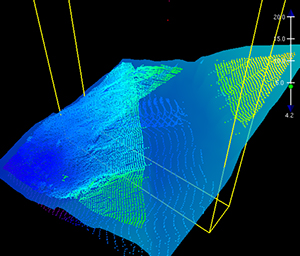
Multibeam echo sounder at location of reported obstruction.
U.S. Coast Guard Sector Northern New England (USCG NNE) Waterways Management and Portsmouth Pilots reached out to Northeast Navigation Manager
Colleen Roche, for assistance in determining the safest route for commercial vessels around a charted obstruction in the federal channel. The obstruction was charted based on side scan sonar from the University of New Hampshire in 2014. NOAA Ship
Ferdinand R. Hassler operations officer,
Steven Wall, recalled that the obstruction in question was covered by multibeam echosounder (MBES) data during a support request from USCG NNE for a sunken vessel in the summer of 2020. The Atlantic Hydrographic Branch’s (AHB)
Gene Parker reviewed MBES data and completed an Anti-DtoN within a week of the query. AHB’s
Amanda Finn conducted the rapid survey assessment and processed the data to meet the Hydrographic Survey Division’s charting standards. USCG NNE was able to use the Anti-DtoN information and a geoPDF from the processed data to modify traffic rules, allowing for more efficient use of the waterway. For more information contact
Colleen.Roche@noaa.gov.
Coast Survey’s Hydrographic Surveys Division hosts NOAA’s annual Basic Hydro School
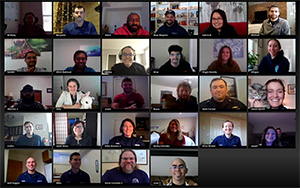
Basic Hydrographic School 2021 virtual group image.
The Hydrographic Survey’s Division (HSD) is currently hosting NOAA's annual Basic Hydro School. This year's training is being held remotely, with attendees throughout the contiguous United States, Alaska, Hawaii, and Puerto Rico. This intensive course includes the fundamentals of underwater acoustics, sonar theory, positioning and datum information, theory-based training, and includes an introduction to the technical aspects of NOAA's hydrographic mission. Personnel from NOAA ships
Rainier,
Fairweather,
Thomas Jefferson,
Pisces,
Reuben Lasker,
Nancy Foster, and
Ronald H. Brown, HSD operations, and navigation response teams, are among the students. Attendees also include the U.S. Coast Guard, Great Lakes Environmental Research Laboratory, Navy, and National Geospatial-Intelligence Agency. Instructors from across the hydrographic community include personnel from the Atlantic Hydrographic Branch, the Center for Operational Oceanographic Products and Service, National Centers for Coastal Ocean Science, NOAA ships
Fairweather and
Thomas Jefferson, Coast Survey, and Pacific Hydrographic Branch. Training began on February 1, and will run through February 26. For more information contact
Gabriella.E.McGann@noaa.gov.


Staff Updates
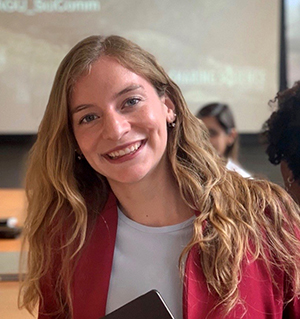
Lucila Bloemendaal
Lucila Bloemendaal is a coastal geologist working on her PhD at Boston University, where she studies salt marsh erosion and the impacts of large storms on marsh resilience. Growing up, she spent time in various locations including New Orleans, Houston, and the Netherlands, before landing in North Carolina for college. She received her bachelor of science in Earth and Ocean Sciences at Duke University, where she enjoyed exploring the world through the lens of geoscience, including field trips to Yellowstone and Ireland. Her research subjects at Duke varied from plant epigenetics to paleoceanography, and she interned at the National Geodetic Survey through the Hollings scholar program. While not working, she enjoys baking, exploring the outdoors, and spoiling her housemate’s pet. Lucila is happy to be (virtually) back at the National Ocean Service and very excited to support Coast Survey during her fellowship year.
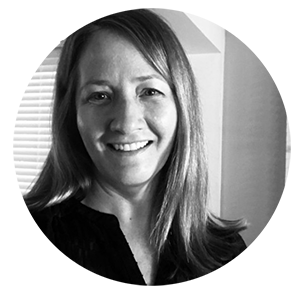
Kristen Crossett
Long time Coast Survey staff member
Kristen Crossett has accepted a position with the Office of Ocean Exploration and Research and will be starting there on March 1. Kristen’s dedication to Coast Survey during her time here has been exemplary. Kristen worked to ensure that Coast Survey stakeholders have the latest information distributed through the blog and social media accounts (having recently added LinkedIn to the portfolio). Kristen was instrumental in reviewing materials, copy-editing documents, creating graphics, and assisting with cover designs on many Marine Chart Division initiatives including the National Charting Plan, transforming electronic navigational charts and sunsetting traditional NOAA charts. She has truly been central to all Coast Survey initiatives, including contributions to a National Ocean Mapping Strategy, Seabed 2030, enhancing the communications profile of the International Hydrographic Organization, along with countless presentations and talking points, rollout plans, and infographics. Kristen is a kind and pleasant person who has gone above and beyond with every task that she is assigned and has performed her duties with such professionalism. It has been an honor and pleasure to work with her, and she will be missed as a colleague and a friend.

Drew Stevens
Andrew H. Stevens, a University of New Hampshire computer science graduate student within the Center for Coastal and Ocean Mapping/Joint Hydrographic Center (CCOM/JHC), has successfully defended his Ph.D. dissertation titled, “An Empirical Evaluation of Visual Cues for 3D Flow Field Perception.” Drew’s research focused on studying the underlying human visual perception cues that influence the effectiveness of various data visualization techniques that are used to convey flow direction and magnitude within large 3D oceanic and atmospheric flow datasets—including those being generated by NOAA’s modelling and simulation programs. Drew will continue his work in CCOM/JHC’s Data Visualization Research Lab as a research scientist, where he will apply his skills and experience to exploring new methods for interactive visual analysis of oceanographic data and increasing the safety of marine navigation.
